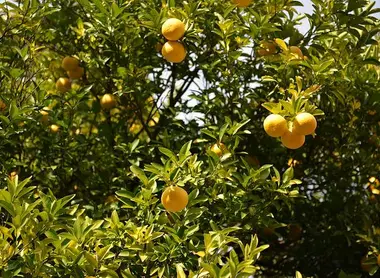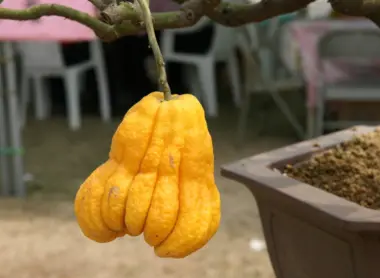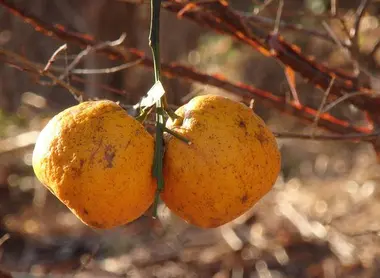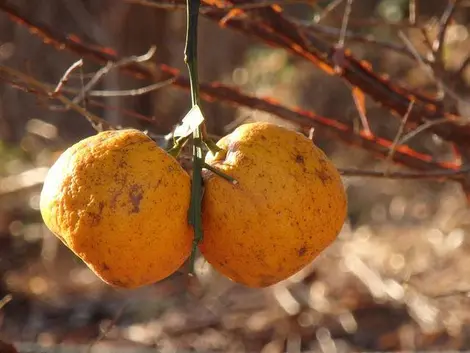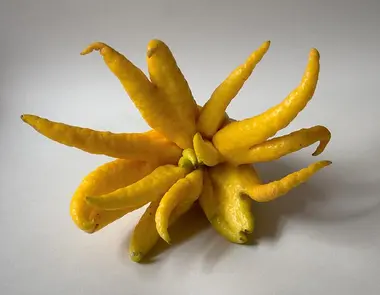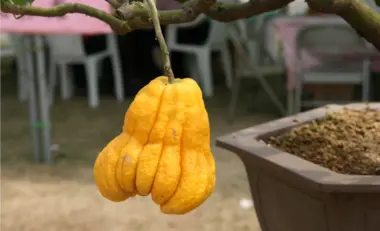Japanese citrus fruits
- Published on : 06/02/2018
- by : F.F.Y
- Youtube
Beyond yuzu
Yuzu, the yellow Japanese citrus fruit, is known around the world. Yuzu sauces and dressings, teas, and ice creams are now among the many Japanese delicacies that have crossed international borders. However, when in Japan you soon realize that it's full of other citrus fruits unknown in other parts of the world: kabosu, shikuwasa, bushukan... Discover some of them now.
Amanatsu, small oval pomelo
About the size of a small grapefruit, the amanatsu (or natsumikan) is a citrus fruit native to Yamaguchi prefecture in southern Honshu. It's official Japanese name is kawano natsu daidai. It is used in several products: juices, jams, and sorbet, as well as alcohol. It is also enjoyed fresh.
Daidai, the eternal orange
Daidai is not endemic to Japan but it is found there. It's a small bitter orange that can survive for many years on the tree if it is not picked - hence its name, which literally means "several generations". Strangely, the fruit turns green again in the spring if it is left on the tree. It is not eaten fresh because of its bitterness, but its juice is used, in particular in ponzu sauce (a tangy dipping sauce that can also be made with yuzu) and its zest preserved for medical preparations.
Kabosu, the cousin of yuzu
The kabosu is a citrus fruit very similar to yuzu. More acidic, it is often used as a substitute for vinegar or to enhance fish dishes. It's often squeezed over sashimi.
Read also: The art of sashimi
It is picked when green but allowed to ripen until it turns yellow. The flesh is orange. In Oita prefecture, on Kyushu, in addition to being consumed in miso soup and noodles, kabosu is used in desserts: in sorbet or candied zest. It's the fruit mascot of the region because it's produced there. The character even has a name, Kabotan!
Komikan, the little mandarin of Kagoshima
The komikan is the smallest tangerine in the world! It's also known as a Sakurajima komikan, because it grows in the soil enriched by the composites of the Sakurajima volcano of the same name, in Kagoshima region. It is harvested in December and eaten fresh when it has softened. It has a nice orange color.
Shikuwasa, the flat lemon of Okinawa
Each southern region of Japan seems to have its own flagship citrus fruit. In the Okinawa Archipelago, on the Ryukyu Islands, grows shikuwasa, an acidic lime - also called hirami remon. This green fruit is enjoyed mainly in drinks (alcohols and juices) but also in ponzu sauce. Its unsweetened and balanced taste is refreshing. The ripe fruit is not consumed.
The famous Yuzu
No-one can claim to be interested in Japanese food and not know about yuzu! This small citrus fruit, that looks like a miniature version of a grapefruit, is regularly used in ponzu dipping sauce. It is also found in yuzu hachimitsu, a syrup consumed as a hot sweet drink when mixed with water, and yuzu liqueur. It also flavors all kinds of creams, pastries, and other desserts. The skin of the yuzu is very fragrant, and has a cosmetic use: traditionally, during the winter solstice (toji), the Japanese put yuzu in the bath.
Zabon, the Japanese grapefruit
Zabon is a fruit traditionally reserved for religious offerings in Japan but it is also found in candied fruit form. It's a big pomelo with flesh more bitter than most other citrus fruits. The zabon originally comes from Malaysia - but it is also found in other parts of Asia.
Bushukan, the hand of Buddha
Here's a fruit with a very original shape: unlike other citrus which are usually round, the bushukan has the shape of a hand (hence its name). The fruit separates into several sections reminiscent of fingers. There are two types of bushukan: one where the "fingers" are closed, and the other, with the "fingers" open. The fruit does not contain pulp or juice, but its zest can be used in seasoning, to add flavor to desserts or can be candied. It also has other, religious or medical uses.
